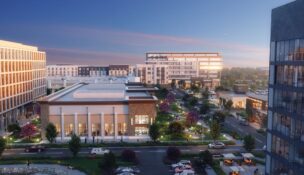Richmond Fed president builds case for interest rate increase
Richmond Fed president builds case for interest rate increase
The president of the Federal Reserve Bank of Richmond said on Friday that the case for raising interest rates for the first time in more than six years remains strong despite recent volatility in the stock market.
Jeffrey M. Lacker, however, stopped short of committing to vote for a rate hike when the central bank’s Federal Open Market Committee meets Sept. 16-17. Fed Chairman Janet Yellen said earlier this year that the Fed intends to begin raising rates before the end of 2015.
“I am not arguing that the economy is perfect, but nor is it on the ropes, requiring zero interest rates to get it back into the ring,” Lacker said at the Retail Merchants Association Economic Forecast Breakfast in Richmond. “It’s time to align our monetary policy with the significant progress we have made.”
Lacker ticked off a variety of economic indicators that he says show that the Fed does not need to keep its benchmark federal funds rate at zero as it has since late 2008. The list included rising consumer spending, a tightening labor market, a relatively steady inflation rate and falling unemployment.
He acknowledged that recent wide fluctuations in the stock market have caused some observers to worry that a rate hike at this time would be a bad move.
Lacker, however, argues that economic problems in China causing market jitters have “only limited implications” for the U.S. economy. Therefore “recent market developments will have only limited implications for the appropriate path of monetary policy,” he said.
Lacker noted that the Fed has overreacted in the past to market swings that were unconnected to economic fundamentals. The central bank cut rates three times in 1998-99, he notes, but wound up taking back those actions the following year.
Lacker also discounted concerns about declining worker participation in the labor market. He conceded that, if part-time workers and people who have left the workforce are included, the July unemployment rate would have been 10.4 percent, well above the official rate of 5.3 percent.
“But most of the people who have left the labor force are not currently looking for work. The decline in labor force participation has been driven mainly by structural and demographic factors, such as the growing number of people enrolling in college and the large baby boom generation reaching retirement age. In addition, research indicates that not all people without a job have the same propensity to return to work,” he said. “Overall, I believe the evidence indicates that labor market conditions no longer warrant continuation of exceptionally low interest rates.”
While the Richmond Fed president was making his speech, the Labor Department reported that the economy added 173,000 jobs in August while the unemployment rate fell to 5.1 percent. He later described the report as “good, right down the middle of the fairway.”
Lacker, known as an inflation “hawk,” believes there is a danger in waiting too long to begin raising rates. Delay “could require a more dramatic increase in rates to restrain inflation pressures once they have become apparent in the data,” he said.
Lacker said the Fed’s reluctance to raise rates in the mid-1960s set off the period of “Great Inflation” that lasted until the early 1980s.
Despite the evidence of a strengthening economy that he put forth, Lacker made no commitment Friday to push for a rate increase at the FOMC meeting.
“I will not make a final decision on the question until I have had the benefit of discussions with my colleagues at the upcoming meeting and have reviewed the additional data we will receive between now and then,” he said.
g















